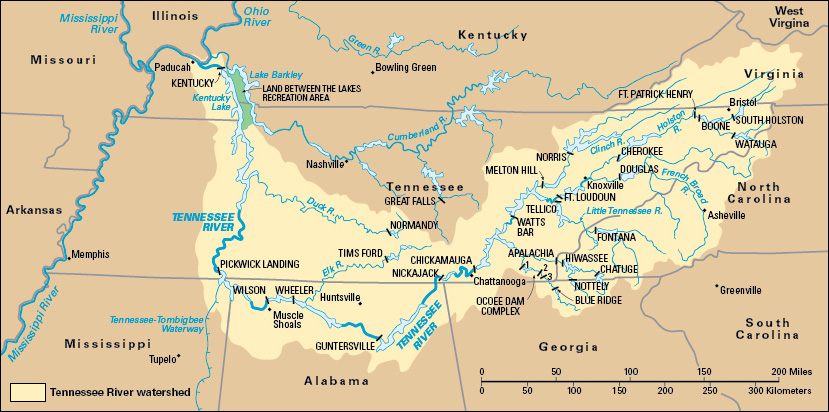Tennessee River is the largest tributary of the Ohio River. It begins at Knoxville, Tenn., where the Holston and French Broad rivers meet, and flows southwest through Tennessee and Alabama. Then the river curves north. It flows back through Tennessee and northwest across Kentucky. At Paducah, Ky., it empties into the Ohio River. The Tennessee River drains an area of about 41,000 square miles (106,000 square kilometers).

Development of the Tennessee River’s water power to generate electricity began in 1913 with the construction of Hales Bar Dam, near Chattanooga, Tenn. Nickajack Dam replaced Hales Bar Dam in 1968. Wilson Dam, near Muscle Shoals, Ala., began generating electricity in 1925.
In 1933, the Tennessee Valley Authority began building a series of dams that converted the Tennessee River into a chain of lakes. The river’s 650-mile (1,046-kilometer) course is navigable by barges. In 1985, the completion of the Tennessee-Tombigbee Waterway connected the Tennessee River with the Tombigbee River of Mississippi and Alabama (see Tombigbee River ). The waterway provides a route to the Gulf of Mexico.
